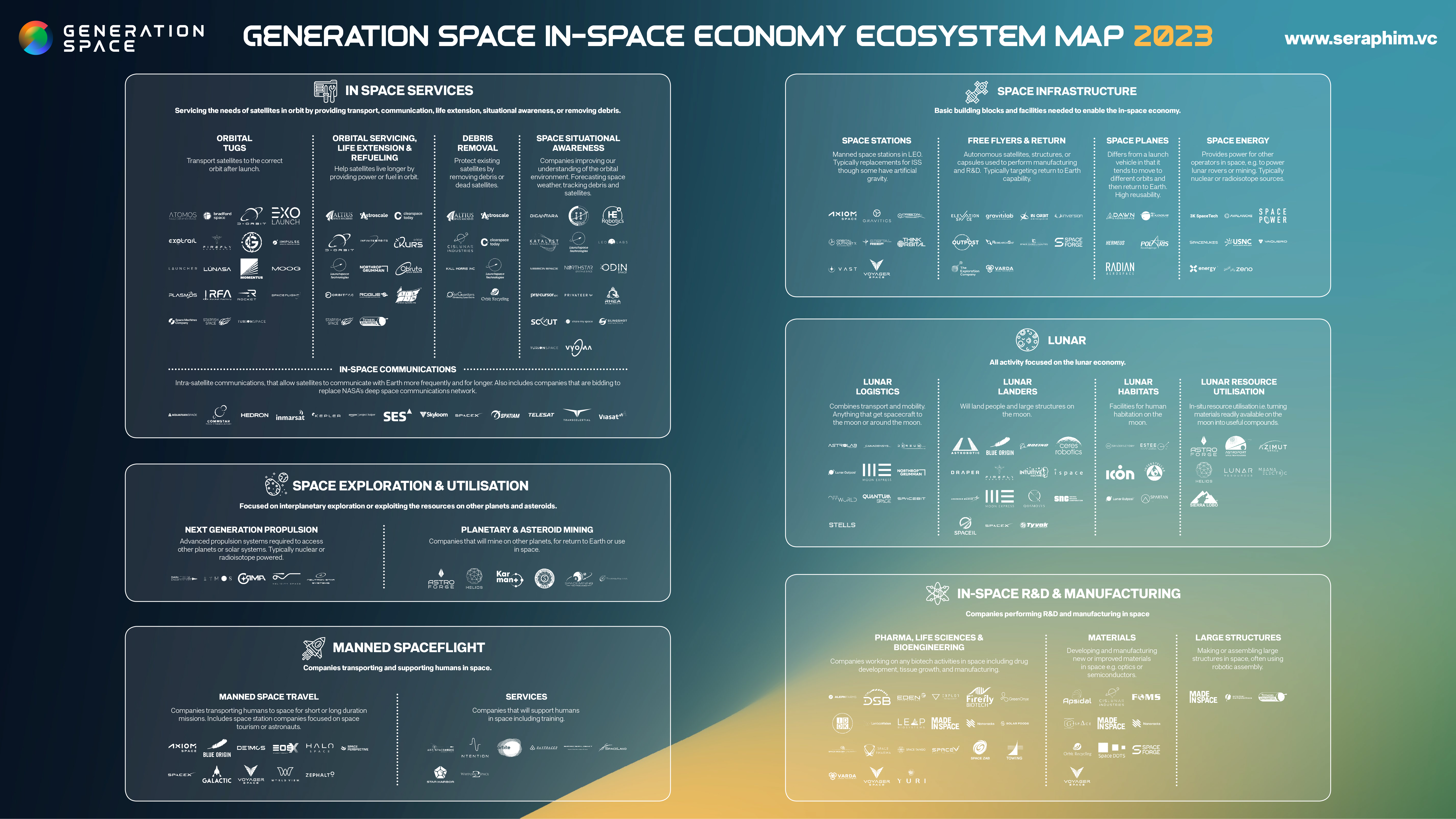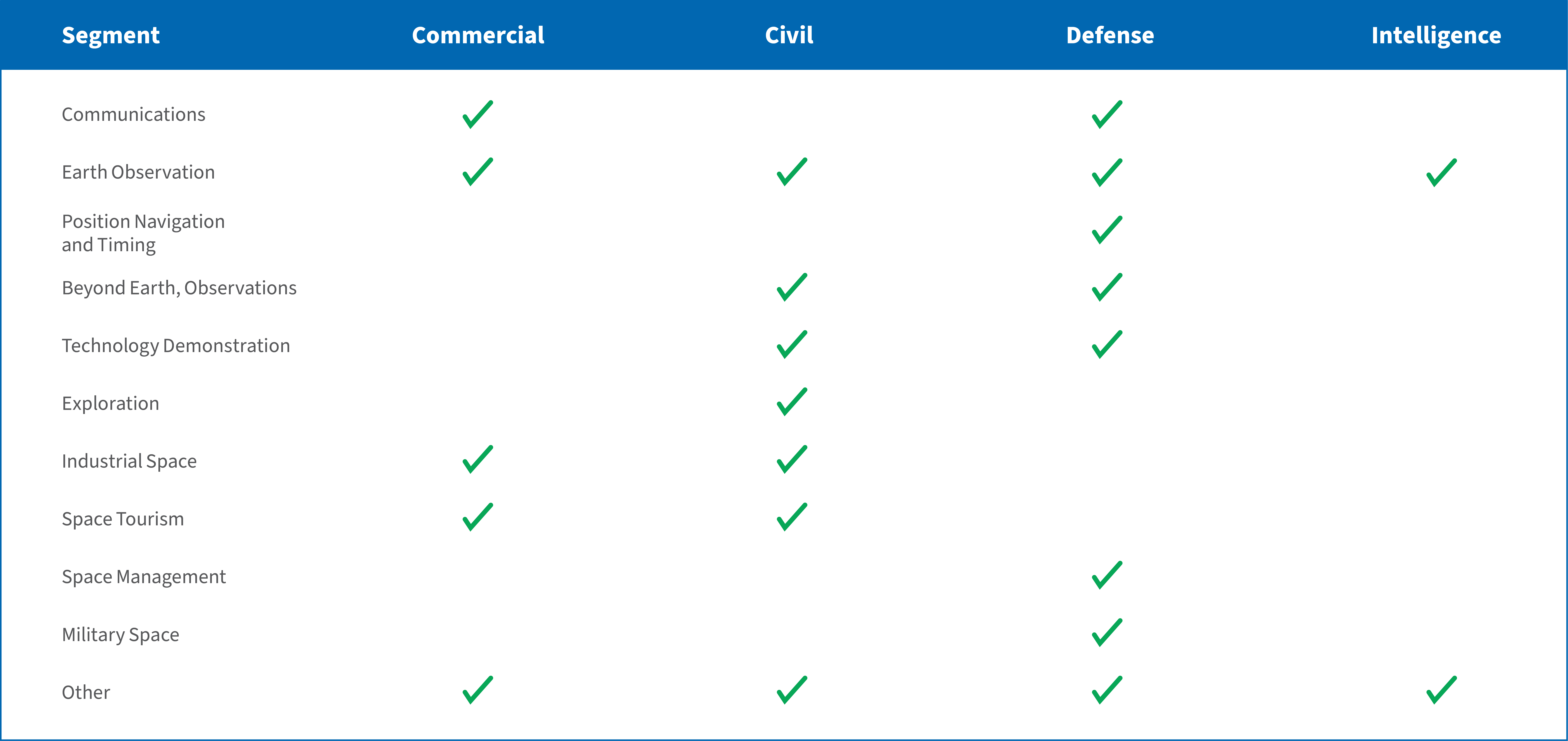Space M&A H1 2023
The current space ecosystem is overly fragmented and lacking scale; companies need to join forces to achieve the common goal
-
May 05, 2023
DownloadsDownload Article
-
Space is hard, in both the technical sense and the financial sense. It takes hundreds of millions of dollars, if not more, to get off the proverbial launchpad. As reference, it is taking Astranis more than $350M1 to develop and build the first commercial micro-GEO. Telesat Lightspeed, still in the process of closing its financing, is estimated to cost $5B.2
While many new space companies have enjoyed high profile technical success as technology demonstrators, the transition from concept to production often involves significant capital requirements. For example, high-profile space SPAC’s during 2021 are struggling to generate sufficient revenue to fund much needed product development.3 Some of these companies are built on technical promises and are largely pre-revenue. SpaceX Starlink, with over 1 million global users, needs the Starlink v2 constellation to become economically viable, despite the v1 Starlink constellation costing upwards of $10 billion.4,5
Many of the new space players are chasing the same or similar end markets. During the 2021 SPAC frenzy, there were at least four companies targeting the government and commercial earth observation market (Planet, BlackSky, Spire, and Satellogic); and three companies targeting the small launch market (Virgin Orbit, RocketLab, and Astra).6 According to Generation Space’s 2023 In-Space Economy Ecosystem map, there are at least two dozen or so new space companies focusing on orbital tugs, life extensions, space debris, commercial space stations and space situational awareness; and another dozen or so new space launch exploration and utilization companies.7
FIGURE 1: GENERATION SPACE IN-SPACE ECONOMY ECOSYSTEM MAP 2023
Surely, most investors who have put money into the space ecosystem believe that there is a market for their product and services. That may be true in some instances, but the reality is much more nuanced. At FTI Consulting, we further segment the space domain based on end-user applications, with 11 categories:
Many of these markets are inherently institutional (governmental) with a finite amount of available funding. Although we’re seeing disproportionate growth in funding for governmental space programs within the U.S. (the Space Force’s budget request was nearly 40% higher in 2023 than in 2022), this level of activity is likely not sustainable.8 Given the costs to fully mature a space technology, the question remains whether the end markets are large enough to support the current number of players.
In our view, the space and satellite industry need to move from divergence to convergence and scale. There are many promising players with revolutionary technology, but the industry is overly fragmented for these technologies to mature and be economically viable. Investors can add value by combining the right assets to achieve global scale. The space industry truly needs collaboration on a global level; otherwise individual country/regional markets will be too small to bring a nascent technology to operational maturity. As an example, convergence and scale can be achieved through vertical integration (e.g., IoT + satellite + data analytics) or horizontal integration (e.g., Optical ISLs or user terminals).
Integration can come in many forms, including traditional mergers and acquisition, joint venture or simple partnership. The key is to understand the broader strategic priorities of the parties involved, be they financial, technical or geopolitical. However, it is important to note that, in some cases, regulatory authorities and legislative bodies stand opposed to integration and cross-border collaboration.
Take, for example, a recent letter written by Senator Elizabeth Warren to the Federal Trade Commission “FTC” expressing opposition of the pending acquisition of Aerojet Rocketdyne by L3Harris Technologies.
The letter, which heavily cites arguments from the Department of Defense’s February 2022 “State of Competition within the Defense Industrial Base” report, positions Aerojet Rocketdyne as just the latest target of L3-Harris’s “acquisition spree spanning two decades and over 30 target companies.”9 Importantly, the scope of the letter expands well beyond the L3Harris-Aerojet transaction and specifically cites other defense primes for their alleged anti-competitive behavior, including vertical consolidation.
Additionally, as it relates to cross-border collaboration, the current regulatory environment in the U.S. often works against this objective. For example, ITAR restrictions in the commercial satellite sector can prohibit U.S.-based companies from scaling into other markets, while foreign competitors with less burdensome regulations strengthen their position. In response to this challenge, Tom Stroup, President of the Satellite Industry Association, recently testified before the House Energy and Commerce Subcommittee on Communications and Technology and advocated for the “removal of satellite technologies from restrictive export control regulation when international commercial alternatives exist.”10
If left unaddressed, these regulatory and political impediments have the potential to negatively impact investors as they look to create value and strengthen the space ecosystem.
With over 50 years of combined experience working across the space value chain, FTI Consulting has extensive experience setting up the right mechanism to achieve the convergence and growth objectives, while also managing and mitigating regulatory and political risk. For further discussions around potential integration targets, or how best to structure the opportunity, please reach out to our FTI Consulting space experts.
Footnotes:
1: Jason Rainbow, “Astranis secures $250 million to accelerate small GEO satellite development,” Space News (April 14, 2021), https://spacenews.com/astranis-secures-250- million-to-accelerate-small-geo-satellite-development/
2: Jeff Foust, “Telesat completing financing for Lightspeed constellation”, Space News (April 7 2021), https://spacenews.com/telesat-completing-financing-for-lightspeed- constellation/
3: Jeff Foust, “Virgin Orbit raises $10 million as financial stopgap”, Space News (February 2, 2023), https://spacenews.com/virgin-orbit-raises-10-million-as-financial-stopgap/
4: Michael Baylor, “With Block 5, SpaceX to increase launch cadence and lower prices” NASA Spaceflight (May 17, 2018), https://www.nasaspaceflight.com/2018/05/block-5- spacex-increase-launch-cadence-lower-prices/
5: Chris Dunphy, “Elon Musk Warns That Starlink Is At Risk as SpaceX Faces “Genuine Risk of Bankruptcy”” Mobile Internet Resource Center (November 30, 2021), https://www. rvmobileinternet.com/elon-musk-warns-that-starlink-is-at-risk-as-spacex-faces-genuine-risk-of-bankruptcy/
6: Doug Messier, “Space SPACs: The Reckoning Ahead,” Parabolic Arc (October 26, 2022), https://parabolicarc.com/2022/10/26/space-spacs-the-reckoning/
7: Seraphim Capital, “Generation Space In-Space Economy Ecosystem Map 2023”, (2023) https://generation.space/wp-content/uploads/2023/02/ InSpaceEconomyEcosystemMap-16x9-genspace_v1.pdf
8: Theresa Hitchens, “Space Force budget gets a big boost to $24.5B in FY23, focus on resilience,” Breaking Defense (March 28, 2022), https://breakingdefense.com/2022/03/ space-force-budget-gets-a-big-boost-to-24-5b-in-fy23-focus-on-resilience/
9: Elizabeth Warren, Letter from Senator Elizabeth Warren to the Federal Exchange Commission (January 26, 2023) https://www.warren.senate.gov/imo/media/ doc/2023.01.26%20Letter%20to%20FTC%20re%20Aerojet-L3Harris.pdf
10: Peter B. De Selding, “One example of ITAR and NewSpace: Signals intelligence provider Hawkeye 360” Space Intel Report (February 13, 2023), https://www.spaceintelreport. com/one-example-of-itar-and-newspace-signals-intelligence-provider-hawkeye-360/
Related Information
Published
May 05, 2023
 Key Contacts
Key Contacts
Senior Managing Director, Global Leader Private Equity
Managing Director
Managing Director




